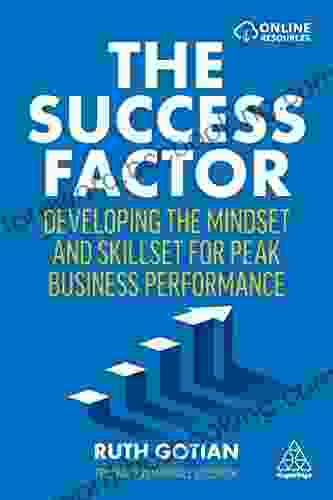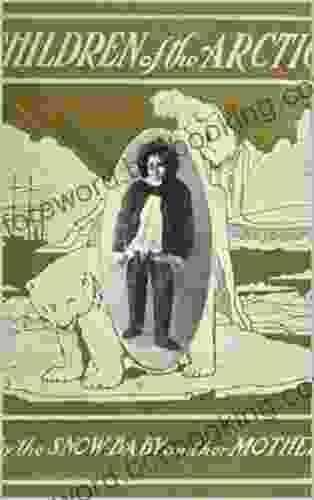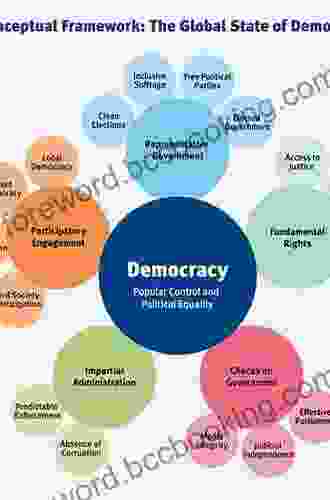Social Problems Illustrated: Henry George's Enduring Insights


4.7 out of 5
| Language | : | English |
| File size | : | 1935 KB |
| Text-to-Speech | : | Enabled |
| Screen Reader | : | Supported |
| Enhanced typesetting | : | Enabled |
| Word Wise | : | Enabled |
| Print length | : | 224 pages |
Social Problems Illustrated is a powerful and insightful work that explores the root causes of social problems and offers solutions based on the principles of Henry George. This book is a must-read for anyone who wants to understand the challenges facing our society and work towards a more just and equitable world.
Henry George was a brilliant economist and social reformer who lived in the late 19th century. He was deeply concerned about the poverty and inequality that he saw around him, and he spent his life working to find solutions to these problems.
In Social Problems Illustrated, George argues that the root cause of social problems is the private ownership of land. He shows how landownership leads to poverty, inequality, and environmental degradation.
George also offers a solution to these problems: the single tax. The single tax is a tax on the value of land, and it would replace all other taxes. George argued that the single tax would raise enough revenue to meet all government needs, and it would also eliminate the incentive for land speculation.
Social Problems Illustrated is a challenging and thought-provoking book, but it is also a hopeful one. George's insights into the causes of social problems are still relevant today, and his solutions are still viable.
If you are concerned about the state of our world, I urge you to read Social Problems Illustrated. This book has the power to change your understanding of the world, and it can inspire you to work towards a better future.
Table of Contents
- Chapter 1: The Problem of Poverty
- Chapter 2: The Problem of Inequality
- Chapter 3: The Problem of Environmental Degradation
- Chapter 4: The Single Tax Solution
Chapter 1: The Problem of Poverty
In the first chapter of Social Problems Illustrated, George explores the problem of poverty. He shows how poverty is not a natural phenomenon, but rather a product of social and economic institutions.
George argues that the private ownership of land is a major cause of poverty. Land is a natural resource that is essential for life, but it is also a scarce resource. When land is privately owned, it can be used to extract rent from those who need it to survive.
This rent-seeking behavior can lead to poverty in a number of ways. First, it can make it difficult for people to afford to buy land, which can make it difficult for them to build homes and businesses.
Second, rent-seeking can lead to the concentration of land ownership in the hands of a few wealthy individuals. This can make it difficult for small farmers and other land-based businesses to compete.
Third, rent-seeking can lead to the destruction of natural resources, such as forests and wetlands. This can make it difficult for people to find food and shelter.
George's analysis of the problem of poverty is still relevant today. Poverty is still a major problem in many parts of the world, and it is often caused by the same factors that George identified over a century ago.
Chapter 2: The Problem of Inequality
In the second chapter of Social Problems Illustrated, George explores the problem of inequality. He shows how inequality is not a natural phenomenon, but rather a product of social and economic institutions.
George argues that the private ownership of land is a major cause of inequality. Land is a natural resource that is essential for life, but it is also a scarce resource. When land is privately owned, it can be used to extract rent from those who need it to survive.
This rent-seeking behavior can lead to inequality in a number of ways. First, it can make it difficult for people to afford to buy land, which can make it difficult for them to build homes and businesses.
Second, rent-seeking can lead to the concentration of land ownership in the hands of a few wealthy individuals. This can make it difficult for small farmers and other land-based businesses to compete.
Third, rent-seeking can lead to the destruction of natural resources, such as forests and wetlands. This can make it difficult for people to find food and shelter.
George's analysis of the problem of inequality is still relevant today. Inequality is still a major problem in many parts of the world, and it is often caused by the same factors that George identified over a century ago.
Chapter 3: The Problem of Environmental Degradation
In the third chapter of Social Problems Illustrated, George explores the problem of environmental degradation. He shows how environmental degradation is not a natural phenomenon, but rather a product of social and economic institutions.
George argues that the private ownership of land is a major cause of environmental degradation. Land is a natural resource that is essential for life, but it is also a scarce resource. When land is privately owned, it can be used to extract profit from those who need it to survive.
This profit-seeking behavior can lead to environmental degradation in a number of ways. First, it can lead to the destruction of forests and wetlands. This can make it difficult for people to find food and shelter.
Second, it can lead to the pollution of air and water. This can make it difficult for people to stay healthy.
Third, it can lead to the depletion of natural resources. This can make it difficult for people to find food and shelter.
George's analysis of the problem of environmental degradation is still relevant today. Environmental degradation is still a major problem in many parts of the world, and it is often caused by the same factors that George identified over a century ago.
Chapter 4: The Single Tax Solution
In the fourth chapter of Social Problems Illustrated, George offers a solution to the problems of poverty, inequality, and environmental degradation: the single tax. The single tax is a tax on the value of land, and it would replace all other taxes.
George argued that the single tax would raise enough revenue to meet all government needs, and it would also eliminate the incentive for land speculation.
The single tax has been endorsed by many economists and social reformers over the years, including Albert Einstein, Bertrand Russell, and Martin Luther King Jr.
The single tax is a simple and elegant solution to the problems of poverty, inequality, and environmental degradation. It is a solution that is based on the principles of justice and sustainability.
If you are concerned about the state of our world, I urge you to read Social Problems Illustrated. This book
4.7 out of 5
| Language | : | English |
| File size | : | 1935 KB |
| Text-to-Speech | : | Enabled |
| Screen Reader | : | Supported |
| Enhanced typesetting | : | Enabled |
| Word Wise | : | Enabled |
| Print length | : | 224 pages |
Do you want to contribute by writing guest posts on this blog?
Please contact us and send us a resume of previous articles that you have written.
 Book
Book Novel
Novel Page
Page Chapter
Chapter Text
Text Story
Story Genre
Genre Reader
Reader Library
Library Paperback
Paperback E-book
E-book Magazine
Magazine Newspaper
Newspaper Paragraph
Paragraph Sentence
Sentence Bookmark
Bookmark Shelf
Shelf Glossary
Glossary Bibliography
Bibliography Foreword
Foreword Preface
Preface Synopsis
Synopsis Annotation
Annotation Footnote
Footnote Manuscript
Manuscript Scroll
Scroll Codex
Codex Tome
Tome Bestseller
Bestseller Classics
Classics Library card
Library card Narrative
Narrative Biography
Biography Autobiography
Autobiography Memoir
Memoir Reference
Reference Encyclopedia
Encyclopedia Henry Mayer
Henry Mayer Marie Bigelow
Marie Bigelow Shoshana Levin Fox
Shoshana Levin Fox Jill Grunenwald
Jill Grunenwald Shayla Black
Shayla Black Harlow Giles Unger
Harlow Giles Unger Henrietta Harrison
Henrietta Harrison Isak Dinesen
Isak Dinesen Helen Freeman
Helen Freeman Helen Zee
Helen Zee Heather Lang
Heather Lang Honey Phillips
Honey Phillips Shadi Hasanzadenemati
Shadi Hasanzadenemati Harry Bernstein
Harry Bernstein Harold Kerzner
Harold Kerzner Harry Braverman
Harry Braverman Mandy Harbin
Mandy Harbin Harper Paris
Harper Paris Katherine L House
Katherine L House Vicky Young
Vicky Young
Light bulbAdvertise smarter! Our strategic ad space ensures maximum exposure. Reserve your spot today!

 Eddie PowellCelebrate the Joy of Easter with Tiny Heather Vogel Frederick's Delightful...
Eddie PowellCelebrate the Joy of Easter with Tiny Heather Vogel Frederick's Delightful... Jesse BellFollow ·9.8k
Jesse BellFollow ·9.8k John MiltonFollow ·9.7k
John MiltonFollow ·9.7k Barry BryantFollow ·19.4k
Barry BryantFollow ·19.4k Heath PowellFollow ·13.1k
Heath PowellFollow ·13.1k Don ColemanFollow ·5.9k
Don ColemanFollow ·5.9k Aleksandr PushkinFollow ·4.1k
Aleksandr PushkinFollow ·4.1k Eric NelsonFollow ·6.7k
Eric NelsonFollow ·6.7k Bill GrantFollow ·3.6k
Bill GrantFollow ·3.6k

 Fabian Mitchell
Fabian MitchellUnleash the Adventure: Family Fun in the Black Hills
Nestled amidst the rolling hills...

 Alfred Ross
Alfred RossUnleashing Peak Business Performance: A Journey of...
In today's rapidly evolving business...

 Fernando Bell
Fernando BellEmbrace the Prophetic Voice of Howard Zinn: A Journey...
As we navigate the complexities of our...

 Jonathan Franzen
Jonathan FranzenChildren of the Arctic: A Literary Expedition to the...
In the annals of...

 Branson Carter
Branson CarterYou Can Be Neutral on a Moving Train: A Transformative...
Welcome, dear reader,...
4.7 out of 5
| Language | : | English |
| File size | : | 1935 KB |
| Text-to-Speech | : | Enabled |
| Screen Reader | : | Supported |
| Enhanced typesetting | : | Enabled |
| Word Wise | : | Enabled |
| Print length | : | 224 pages |












